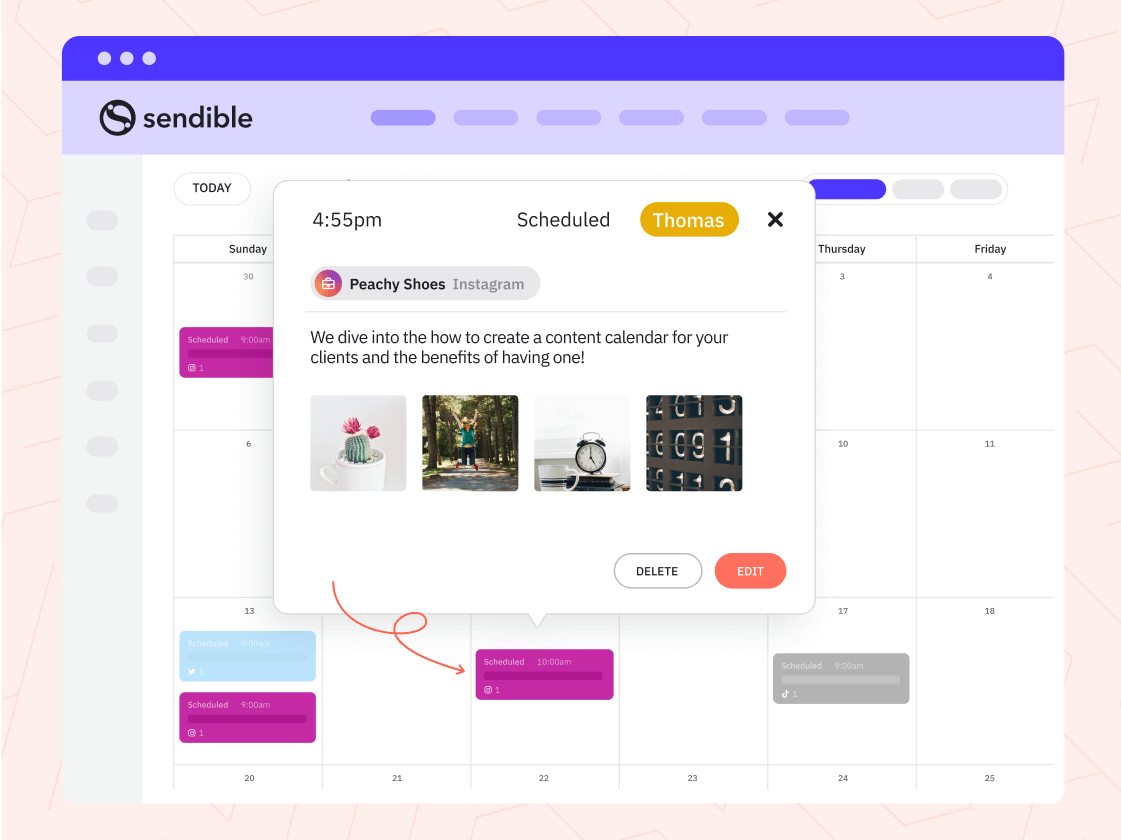Sendible insights The Complete Guide to Social SEO: What It Is and How to Master It
If the first thing that comes to mind when you hear “search engine optimization” (SEO) is Google, you’re not alone.
Today’s competitive digital landscape has made it impossible for marketers to avoid.
But do you know what also has algorithms you have to optimise content for if you want to shoot your shot with your target audience? Social media platforms.
Facebook, Instagram, TikTok, you name it. All these fun-loving, addicting apps adhere to a strategic algorithm that social media marketers have to learn how to crack.
In this guide, we’ll go over the following:
- What social SEO is
- Social SEO tips for Instagram
- Social SEO tips for Facebook
- Social SEO tips for TikTok
- Social SEO tips for YouTube
- FAQs about Social SEO
What is Social SEO
Social SEO is the practice of optimising your social media pages according to the platforms’ algorithms.
This makes your content more visible in search and people’s feeds, which allows you to gain more followers and increase your engagement rate.
In 2023, 77% of businesses use social media to connect with customers, and 41% even use social media as a revenue source.
This makes sense, considering that 76% of users have bought at least one thing they’ve seen on social media.
And according to HubSpot, social media accounts for 16% of website traffic on average—compared to 17% brought by organic search.
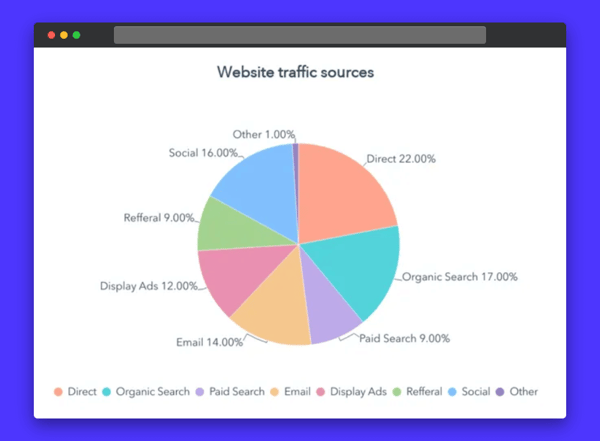
Source: HubSpot
Like Google, social media platforms adhere to specific algorithms that determine which posts users see. Since each one is different, understanding the algorithms of your chosen platforms is essential if you want a return on your social media marketing efforts.
Social SEO for Instagram
Instagram shows its users content—such as posts and reels—in their feed based on what the algorithm has determined the user likes to consume.
The Instagram Story feature works similarly. Users see the stories of accounts they interact the most with first.
Here are a few tips for mastering the Instagram algorithm to gain more followers and ensure your existing audience sees your new posts:
- Find low-hanging fruit hashtags. You’ll quickly notice that some Instagram hashtags have been used billions of times and others 100 or less. When choosing the hashtags for your posts, aim to find a middle ground—also known as “low-hanging fruit.” These hashtags have the potential to bring lots of traffic and less risk that mega-influencer accounts will drown you out. Of course, make sure the hashtags are relevant first. Then, choose long-tail variations of broad topics to find your low-hanging fruit. For example, the hashtag #weightlosstips has over 3.6 million posts. But #weightlosstipsformen has a little over 7,600 posts. You can download a list of industry hashtags for each social media platform here.
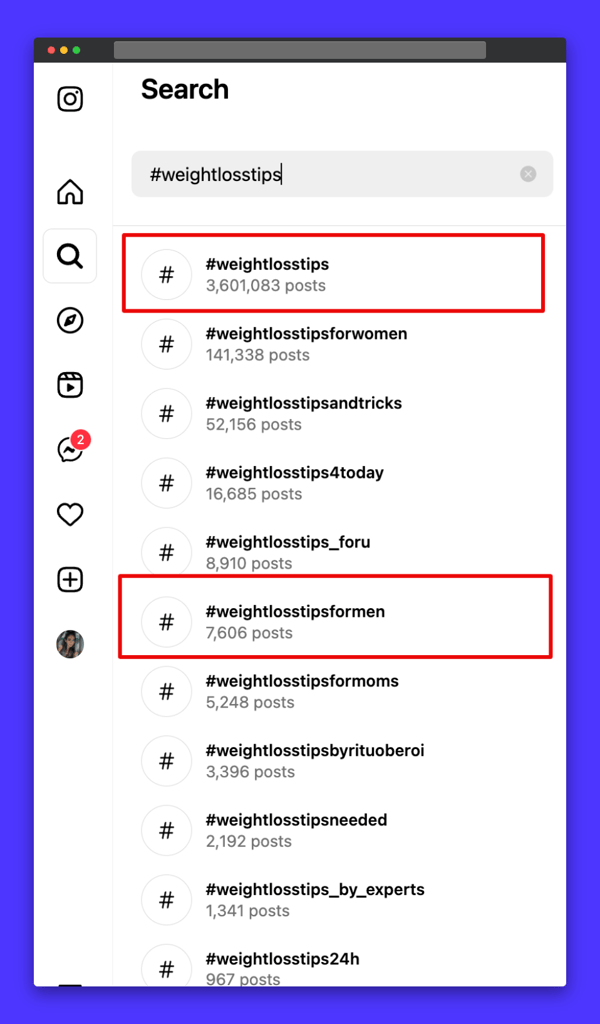
- Naturally incorporate keywords in your content. Keywords are different from hashtags. Usually, there’s overlap—your keywords will most likely also become hashtags at the end of your post. But try to incorporate terms into your post body naturally that signal to the algorithm what your content is about. Using the weight loss tips example again, you can use the hashtag #weightlosstipsformen and naturally use the full phrase “weight loss tips for men” somewhere in your post.
- Identify the best time of day to post. Instagram’s analytics let you see which times of day (and which days of the week) your audience sees and interacts most with your content. Simply go to “Insights” → “Audience.” After scrolling down, you’ll see a blue bar graph and pie chart showing the data that will allow you to find the optimal time to post.
- Aim to post 10 stories per day. Although it’s not necessary to post something on your feed every day, it’s essential to update your Instagram Story daily if you’re serious about growing your following and increasing engagement. These stories can be of anything—behind the scenes of your company’s team, Q&As, daily quotes, team selfies, etc. Stories tell Instagram you’re active and ready to engage with your followers, increasing the likeliness they’ll see your content.
- Take advantage of Reels. Don’t limit yourself to the traditional (and therefore, comfortable) Instagram feed posts. Instagram Reels is only becoming more popular, with its usage increasing by over 57% in a year. Plus, Reels beat every other type of Instagram content in terms of reach. A study from HypeAuditor found that the estimated reach for reels is 33.8%, making it the highest out of all other forms.
- Use location tags. Tagging your location in posts is an easy way to increase your visibility and overall engagement. According to one study, posts with location tags receive 79% higher engagement than posts without one.
Social SEO for Facebook
Facebook is the most common social media for businesses, so it’s probably on your list of platforms to optimise.
Here are some best practices for making the most of your Facebook marketing efforts:
- Optimise your page description and “About” section. Unlike Instagram, Facebook lets you write an “about” section and a page description with many more characters. Incorporate keywords naturally that describe what you offer, who you are, and the audience you serve. Take for example the athletic wear company Fabletics. Their “about” page is full of engaging content that describes who they are, what their brand values are, and what products they offer.
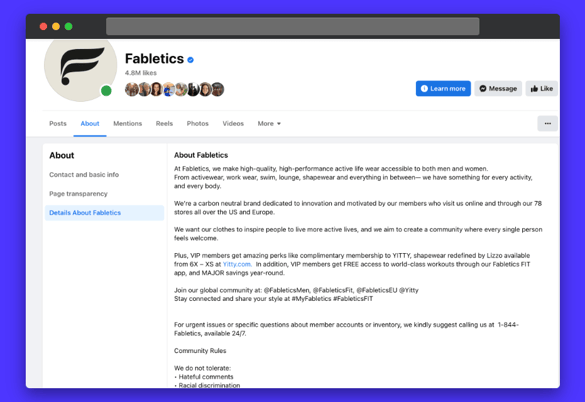
- Change your default URL to a vanity URL. Each Facebook page has a default URL—a string of letters and numbers at the end of the link. However, Facebook lets you change your default URL to a vanity URL, which is one you create. Using the Fabletics example again, instead of their URL being facebook.com/123456…, their vanity URL is facebook.com/Fabletics.
- Keyword-optimise your page content. Just like Instagram, Facebook’s algorithm understands what your content is about by the way you write it. So it’s essential to sprinkle in specific, long-tail keywords whenever possible (and where they fit).
- Include as much “about” information as you can. It might seem like a hassle, but when Facebook acts for all that information, it’s best to just hand it over. Include your website link, page type, other social links, hours of operation, location, and whatever else you can.
Social SEO for TikTok
TikTok has taken the world by storm since its inception, with over 1.67 billion active users.
And what’s most attractive to marketers is that TikTok has a potential ad reach of over 1 billion adults monthly.
- Hop on trends and use popular sounds. TikTok is full of song-based trends that creators use as audio to their videos, film themselves dancing to, and the like. By using the most popular sounds, you can ride whatever wave the TikTok community is surfing to bring you more views and followers.
- Choose 3-5 highly relevant hashtags. Unlike Instagram and Facebook, TikTok doesn’t like when creators use more than a few hashtags. That’s why it’s best practice to stick to 3-5 highly relevant, low-hanging fruit hashtags for your videos.
- Add subtitles or closed captions. Captions can drastically affect how many people keep watching your videos. First, people with hearing disabilities will be able to enjoy the content as much as others. Second, think of how many people browse their phones while waiting in line, on transport, and in public—typically, with the volume off. Captions allow them to watch your video all the way through without needing to turn on the sound.
- Use keywords in your video content. Since TikTok is video-based, you’ll want to use keywords in your descriptions and the video itself. If you’re using captions, add them in the captions. If it’s a talking video, use them when recording your audio.
- Post 1-4 times per day. Growing on TikTok means publishing consistently and a lot. Aim for one post per day minimum. But there’s usually no need to post more than four.
Social SEO for YouTube
- Use keywords in your video title, description, tags, script, and more. On YouTube, there are more places you need to be mindful of when adding your keywords. Try to naturally incorporate your target keyword in the title, description, tags, and spoken video script. Like the other platforms, you should also research long-tail keywords that align with your primary head keywords.
- Add the option for closed captions. You can easily add subtitles and closed captions to your videos by adding the video language in the editor. Select “Subtitles” from the left menu, choose the language, and then click “add.”
- Break your videos into chapters. Dividing your videos into timestamps (also known as “chapters”) makes them easy to digest and gives you more opportunities to naturally use your keywords. Here’s an example of a video that uses chapters:
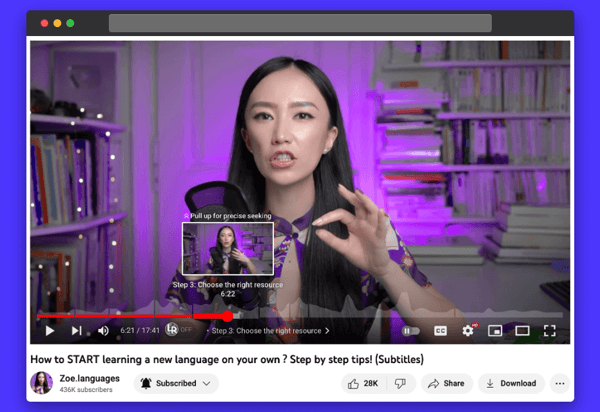
- Create eye-catching thumbnails. YouTube has made it clear that the thumbnail affects your video's performance. Google has even revealed that 90% of top-performing videos have custom thumbnails. The take-home message from this: don’t get sloppy with your thumbnails. Invest in quality design tools like Canva or hire a designer to create top-notch visuals that attract your target audience.
FAQs About Social SEO
Is adding alt text to images really important?
The short answer: yes, adding alt text to images on social media is important.
For one, it allows users with visual disabilities to understand the image through screen readers. Second, alt text describes the image to the algorithm, which helps it decide that your post is relevant to your target audience.
What factors affect social SEO traffic and engagement?
Since each social media algorithm is different, their SEO factors won’t be the same across the board. But the key, most common ones across all platforms are:
- Keyword optimisation
- Posting consistency
- Timing of posts
- Your engagement with comments
- High-quality images and videos
- Likes, shares, and comments
Do AI-generated captions hurt the searchability of social media posts?
At this time, AI-generated content does not hurt the performance of your social media posts as long as you ensure it sounds genuine, authentic, and high-quality.
Conclusion
Mastering social SEO can be challenging, especially since each platform has a different algorithm. But with these tips, you’ll be on the fast track to growth in a cinch.
To make growing your social media accounts more efficient, timely, and cost-effective, you can also try a social media publishing tool like Sendible.
Sendible lets you tailor your content for each platform, create a content calendar, schedule posts, and more.
You can start a free trial or book a call with an expert at Sendible to get started.
Freya Laskowski
Freya is an SEO consultant that helps brands scale their organic traffic with content creation and distribution. She is a quoted contributor in several online publications, including Business Insider, Fox Business, Yahoo Finance, and the Huffington Post. She also owns CollectingCents- a personal finance blog that she grew from the ground up.
You can reach out to her at freya@collectingcents.com
Text copied!


